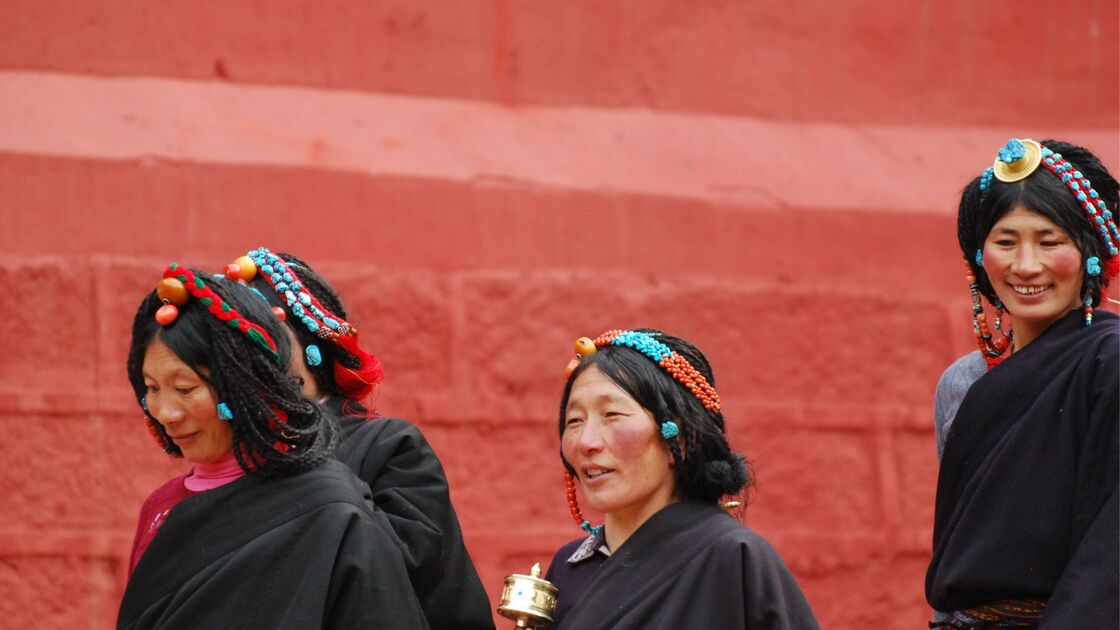+86-15889090408
[email protected]
Tibetan culture is renowned for its rich traditions and festivals that are celebrated with great fervor and enthusiasm. These Tibetan festivals are an integral part of Tibetan life and are deeply rooted in their religious beliefs and customs. The festivals are a way to honor their gods and goddesses, express gratitude, and seek blessings for prosperity. In this essay, we will explore some of the most prominent festivals celebrated in Tibet.

Losar is the Tibetan New Year festival, which is celebrated on the first day of the Tibetan lunar calendar. It usually falls between late January and early March. The festival is celebrated for fifteen days, with the first three days being the most important. The festival is marked by colorful processions, traditional dances, and musical performances. The highlight of the festival is the creation of intricate sand mandalas, which are believed to bring good luck and prosperity.
The Losar Festival has its roots in the pre-Buddhist traditions of Tibet. The festival was originally a time to celebrate the winter solstice, and to pray for an abundant harvest in the coming year. With the arrival of Buddhism in Tibet in the 7th century, the festival became associated with the lunar new year, and the Tibetan calendar was based on the phases of the moon.
The preparations for the Losar Festival begin weeks before the actual celebrations. Houses are cleaned and decorated with colorful prayer flags and auspicious symbols. Special foods are prepared, including butter tea, sweet rice, and meat dishes. Families purchase new clothes and exchange gifts with one another.
The first day of the festival is known as Lama Losar and is dedicated to the spiritual leader of the community. Monasteries hold special prayer ceremonies, and people visit their local lamas to receive blessings. The second day is called Gyalpo Losar and is dedicated to the secular leader of the community. People celebrate by visiting friends and relatives, and by engaging in traditional activities such as archery competitions and horse racing.
On the third day of the festival, families gather together to perform the traditional Losar rituals. This includes offerings of food and drink to the deities, and the burning of juniper branches to ward off evil spirits. The day is also marked by the exchange of gifts and the giving of alms to the poor.
The Losar Festival is not only a time for celebration, but also a time for reflection. People take the opportunity to reflect on the past year and to make resolutions for the year ahead. They also seek to purify themselves of negative thoughts and emotions and cultivate positive qualities such as compassion and generosity.

The Saga Dawa festival is one of the most important religious festivals in Tibet. It is a month-long celebration that takes place during the fourth lunar month of the Tibetan calendar, which usually falls in May or June. The festival is a time for Tibetan Buddhists to honor the life and teachings of the Buddha.
The name “Saga Dawa” means “fourth month” in Tibetan. The festival is also known as the “month of merits” because it is believed that good deeds and prayers made during this time are especially powerful. The festival is marked by various rituals and traditions, including prayer flags, butter lamp offerings, and the circumambulation of sacred sites.
One of the most significant aspects of the Saga Dawa festival is the raising of the giant prayer flagpole at the Jokhang Temple in Lhasa. The flagpole is over 100 feet tall and is covered in thousands of prayer flags. The raising of the flagpole is a symbol of the Buddha’s enlightenment and the spread of his teachings throughout the world.
Another important tradition during the festival is the lighting of butter lamps. Tibetans believe that the light from the lamps represents the wisdom of the Buddha. The lamps are lit in homes, monasteries, and other sacred sites throughout Tibet.
The circumambulation of holy sites, such as the Jokhang Temple and Mount Kailash, is also an important part of the Saga Dawa festival. Tibetans believe that by walking around these sacred sites in a clockwise direction, they can accumulate merit and purify their karma.
During the festival, many Tibetans also engage in acts of generosity and kindness, such as giving alms to the poor and providing food and shelter to travelers. These acts of compassion are seen as a way to accumulate merit and improve one’s karma.
In recent years, the Saga Dawa festival has become more popular among tourists. However, it is important for visitors to respect the religious significance of the festival and to be mindful of their behavior while participating in the celebrations.
The Saga Dawa festival is a significant and meaningful event in Tibetan culture. It is a time for Tibetans to honor the teachings of the Buddha and to engage in acts of compassion and generosity. Through traditions such as the raising of the prayer flagpole, the lighting of butter lamps, and the circumambulation of sacred sites, Tibetans believe that they can accumulate merit and improve their karma. The festival is a beautiful and powerful expression of Tibetan spirituality and is well worth experiencing for anyone interested in the rich cultural heritage of Tibet.

The Shoton festival is a cultural and religious celebration in Tibet that has been observed for centuries. Also known as the Yogurt Festival, the Shoton Festival is a time to honor Tibetan traditions, enjoy delicious food, and participate in various cultural activities.
The Shoton festival typically takes place in late June or early July and lasts for five days. It is traditionally a time for Tibetan monks to return from their summer retreats, and the festival marks the end of the retreat period.
One of the most important events during the Shoton festival is the unveiling of the giant Thangka painting. The Thangka is a colorful silk painting that depicts the Buddha and other important figures in Tibetan Buddhism. The painting is carried from the Drepung Monastery to the Norbulingka Palace, where it is displayed for all to see. Thousands of people gather to witness the unveiling of the Thangka, and it is considered a sacred and awe-inspiring moment.
Another highlight of the Shoton festival is the traditional Tibetan opera performances. These performances take place on makeshift stages throughout the city and attract large crowds of locals and tourists alike. The operas typically tell stories of Tibetan history and mythology, and they are accompanied by traditional music and dance.
Of course, no festival would be complete without food, and the Shoton festival is no exception. One of the most popular foods during the festival is yogurt, which is said to have originated from the Tibetan yogurt-eating tradition. The yogurt is made from yak milk and has a slightly sour taste, which is perfect for the summer heat.
One of the most unique aspects of the Shoton festival is the traditional Tibetan dress worn by the locals. Men and women wear their best clothing, which is often brightly colored and intricately embroidered. The women’s dresses are particularly stunning, with long flowing skirts and elaborate headdresses.
Shoton festival is a time for Tibetans to celebrate their culture and traditions. It is a time for locals and tourists alike to come together and enjoy the vibrant and colorful festivities. From the unveiling of the giant Thangka painting to the traditional Tibetan opera performances and delicious food, the Shoton festival is a truly unique and unforgettable experience.
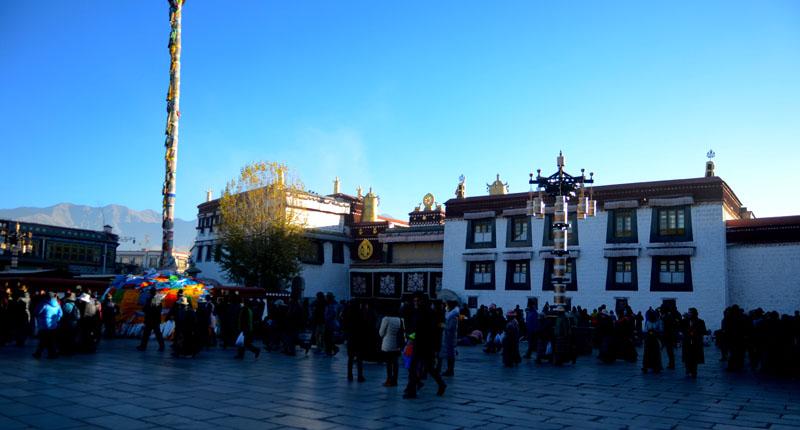
Tibet is a land of rich culture and ancient traditions, and one of the most fascinating events that take place here is the Ganden Thangka Festival. This festival is a celebration of Tibetan Buddhism and is held annually at the Ganden Monastery, located just outside of Lhasa, the capital of Tibet. The festival is a colorful spectacle that attracts many visitors from around the world.
The Ganden Thangka Festival is held on the 15th day of the sixth lunar month, which usually falls in July or August. The festival is centered around the unveiling of a large thangka painting, which is a traditional Tibetan art form. The thangka is a large silk painting that depicts a Buddhist deity or scene and is considered a sacred object in Tibetan Buddhism.
The thangka that is unveiled during the Ganden Thangka Festival is one of the largest in the world, measuring over 80 feet in length and 60 feet in width. The painting is kept rolled up throughout the year and is only displayed during the festival. The unveiling of the thangka is a highly anticipated event, and it is believed that those who witness it will receive blessings and good fortune.
The festival begins with a procession of monks carrying the thangka from the monastery to a special platform outside. The thangka is then unrolled and displayed for all to see. The crowds that gather to witness the unveiling are dressed in their finest traditional clothing, and the atmosphere is electric with excitement and anticipation.
The festival also features traditional Tibetan music and dance performances, as well as a variety of food and craft vendors. Visitors can sample local delicacies such as yak butter tea and momos, a type of Tibetan dumpling. They can also purchase traditional handicrafts such as prayer flags, jewelry, and thangka paintings.
The Ganden Thangka Festival is not just a celebration of Tibetan culture, but also a deeply spiritual event. It is believed that attending the festival and witnessing the unveiling of the thangka can help to purify one’s negative karma and bring good luck and prosperity. Many Tibetans travel from far and wide to attend the festival and receive these blessings.
In recent years, the festival has become increasingly popular with tourists from around the world. However, it is important for visitors to respect the sacred nature of the event and dress modestly, and behave respectfully. It is also important to remember that Tibet is a politically sensitive region, and visitors should be aware of the current political situation and any travel advisories before planning a trip.
The Ganden Thangka Festival is a unique and fascinating event that offers visitors a glimpse into the rich culture and spiritual traditions of Tibet. It is an opportunity to witness a sacred object that is rarely seen by outsiders and to participate in a celebration that has been passed down through generations. Whether you are a devout Buddhist or simply interested in experiencing new cultures, the Ganden Thangka Festival is a must-see event that is sure to leave a lasting impression.
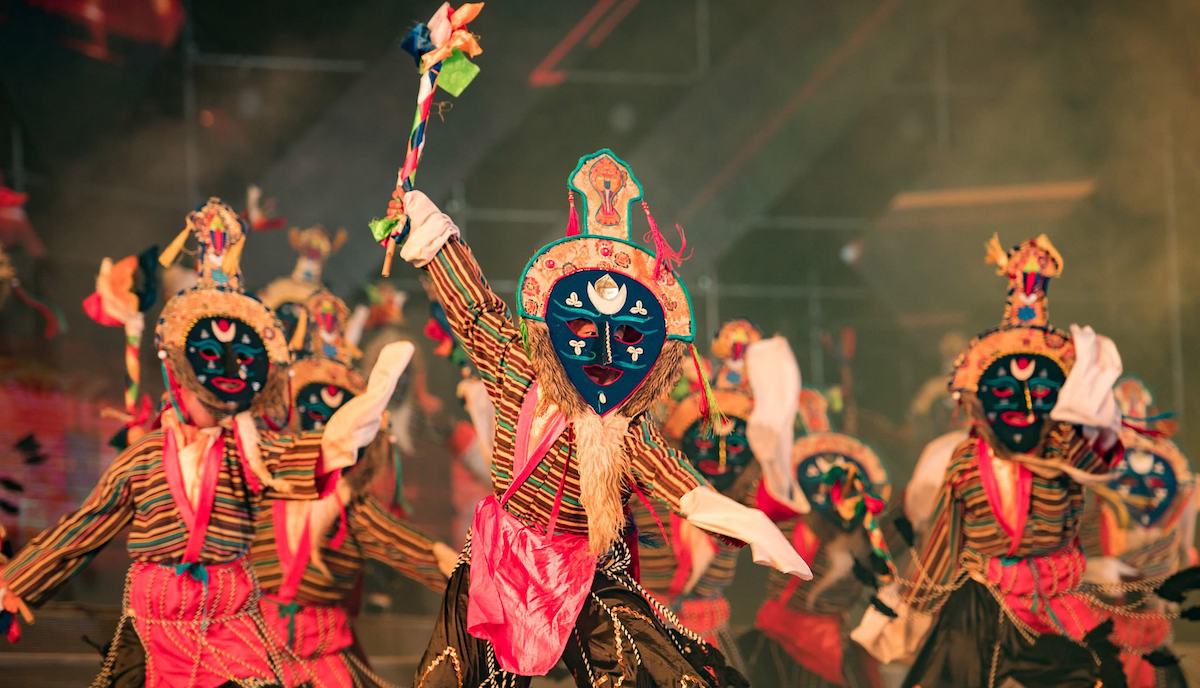
The Tibetan New Year Horse Racing Festival is celebrated in various parts of Tibet, usually in August or September. The festival is marked by horse racing, archery competitions, and traditional Tibetan dances. The festival is a way for Tibetans to showcase their horse-riding skills and celebrate their nomadic heritage. Some of the famous summer horse racing festivals are Lithang horse racing, Yushu horse racing, and Machu horse racing festival.
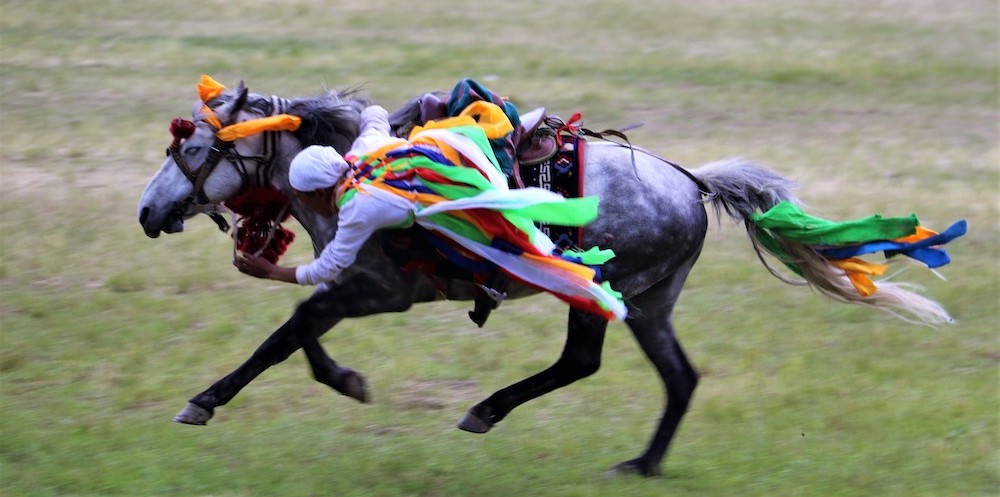
Lithang Horse Racing Festival stands out as one of the most significant and exciting events in the region. The festival is held annually in the town of Lithang, located in the Kham region of Tibet, and is attended by thousands of people from different parts of Tibet and beyond. In this essay, we will explore the history, significance, and cultural significance of the Lithang Horse Racing Festival.
The Lithang Horse Racing Festival is held during the summer months, usually in August or September, and lasts for several days. The festival is a celebration of the Tibetan nomadic culture and their long-standing love for horses, which are an essential part of their lives. The festival is marked by various events, including horse racing, archery, and other traditional games and competitions. Horse racing is the most significant event of the festival, and it attracts the most attention from both locals and tourists. The races are held on a vast grassy field, and the riders, dressed in traditional Tibetan attire, compete for the prize of being the fastest rider.
The history of the Lithang Horse Racing Festival dates back to the 16th century, during the reign of the fifth Dalai Lama. The festival was first initiated as a way to test the horses’ speed and endurance, which were essential for the region’s nomadic lifestyle. Over time, the festival became a cultural event that brought together people from different parts of Tibet to celebrate their shared traditions and customs. The festival has survived many challenges throughout its history, including political upheavals and natural disasters, and has remained an important part of Tibetan culture.
The Lithang Horse Racing Festival is not only significant for its cultural and historical value but also for its economic impact on the region. The festival attracts thousands of visitors each year, and this influx of tourists provides a boost to the local economy. Many local vendors sell traditional foods and handicrafts during the festival, and the event also provides an opportunity for local businesses to showcase their products and services.
The Lithang Horse Racing Festival is a testament to the resilience and strength of Tibetan culture. Despite the challenges that the region has faced, the festival has remained a symbol of the region’s rich history and traditions. The festival is a celebration of the bond between humans and horses, and it reminds us of the importance of preserving our cultural heritage.
It is a unique and exciting event that showcases the beauty and richness of Tibetan culture. The festival has a long history and has remained an important part of the region’s cultural identity. The festival’s significance goes beyond just being a celebration of horse racing; it is a celebration of tradition, culture, and community. As we look towards the future, it is essential that we continue to support and celebrate events like the Lithang Horse Racing Festival, which is a vital part of our shared human heritage.
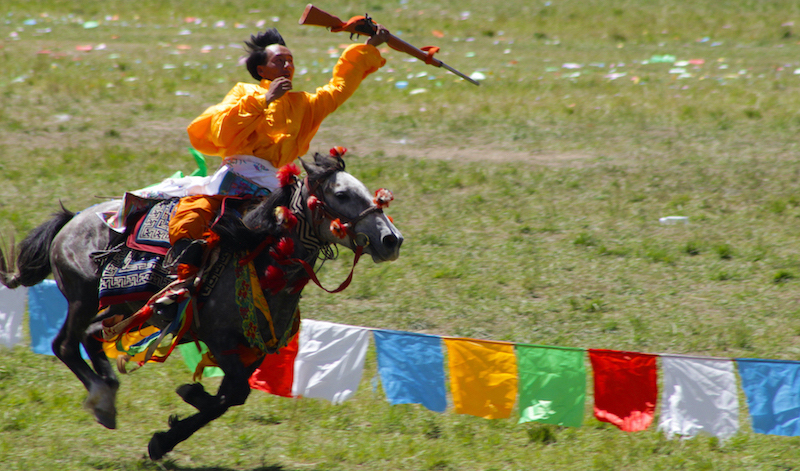
The Yushu horse racing festival is a vibrant celebration that takes place in the Tibetan Autonomous Prefecture of Yushu, located in the southwestern part of China’s Qinghai province. The festival is a unique cultural event that showcases the rich tradition of horsemanship and the nomadic way of life that is still prevalent in Tibetan communities. In this blog post, we will explore the history, significance, and cultural importance of the Yushu horse racing festival.
The Yushu horse racing festival has a long and proud history that dates back to the early 13th century. According to legend, the festival was first organized by the local Tibetan king, who wanted to showcase his skills as a horseman and demonstrate his loyalty to the emperor of China. Over time, the festival became an important cultural event, attracting thousands of people from across Tibet and beyond.
The festival is held every summer, usually in late July or early August, and lasts for several days. The event features a series of horse races, as well as other cultural activities such as singing, dancing, and traditional Tibetan crafts. The highlight of the festival is the horse racing competition, which is divided into several categories based on the age and gender of the horses.
The Yushu horse racing festival is more than just a sporting event. It is an important cultural celebration that reflects the nomadic way of life and the deep spiritual beliefs of the Tibetan people. For many Tibetans, horses are not just animals but are seen as sacred beings that possess great spiritual power. The festival is seen as an opportunity to honor and pay tribute to these magnificent creatures.
In addition to its cultural significance, the Yushu horse racing festival also plays an important economic role in the region. The festival attracts thousands of tourists each year, providing a boost to local businesses and generating income for the local economy. The festival is also an important opportunity for local farmers and herders to showcase their livestock and sell their products.
Despite the festival’s popularity, it has faced some challenges in recent years. In 2010, a devastating earthquake struck the region, causing widespread damage and loss of life. The Yushu horse racing festival was canceled that year as a result of the disaster. However, the festival has since bounced back and continues to be an important cultural event for the people of Yushu.
Yushu horse racing festival is a unique cultural event that reflects the rich history and traditions of Tibetan nomads. The festival’s significance extends beyond its sporting events, providing an opportunity to celebrate the spiritual connection between horses and humans and to showcase the region’s cultural heritage. Despite facing some challenges in recent years, the festival remains an important economic and cultural event for the people of Yushu and for visitors from around the world.
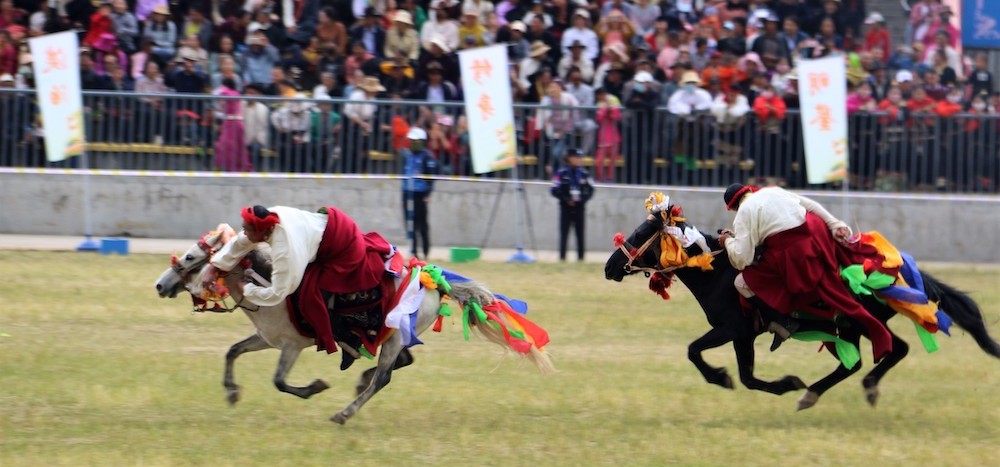
Tibetan festivals are a reflection of their rich cultural heritage and religious beliefs. The festivals are an opportunity for the people to come together, celebrate, and seek blessings for prosperity and happiness. These festivals are not only a source of entertainment but also an important way to preserve their traditions and pass them on to future generations.
